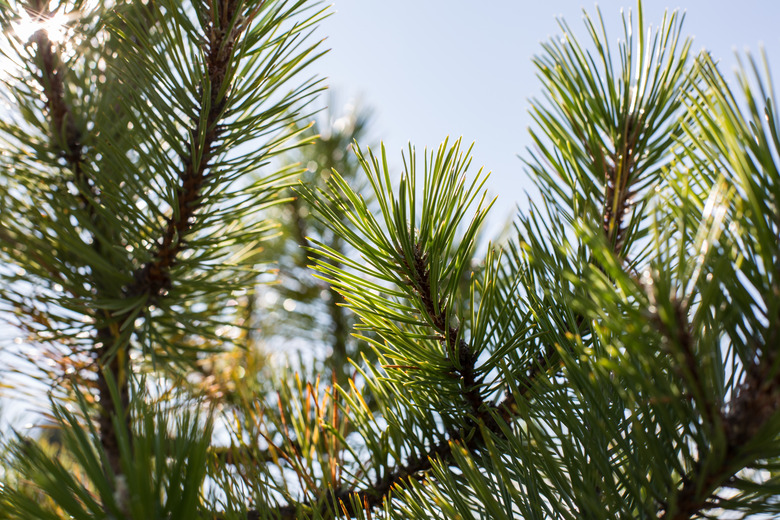How To Save Pine Trees With Browning, Falling Needles
We may receive a commission on purchases made from links.
Taking good care of pine trees keeps them looking their best. Pines (Pinus spp.) thrive in particular conditions and need some special care to help them truly flourish. When your pine tree isn't looking its best, chances are that it's trying to tell you something about its current situation. Understanding why your tree is looking unhappy is key to understanding how to save pine trees with browning, falling needles.
It's important to know that browning, falling needles may be simply part of a pine tree's normal growing cycle. Pines naturally shed their older needles in autumn, after living on the tree for two to five years, depending on the species. These old needles are replaced each year by new ones. But if your tree is shedding needles at a different time of year, and if entire branches are turning brown, you may want to troubleshoot other causes.
Pine Tree Needs
Pine Tree Needs
Pine trees need a good amount of sunlight every day to prosper. Whether they're indoors or outdoors, they should be placed in an area that receives several hours of light every day. Getting your pine tree enough light is an important way to keep its needles bright and green, and it helps the tree to grow optimally.
Pines also like to sit on soil that's moist but never waterlogged. If the top 2 inches of your pine's soil feels bone dry, it's likely time to water. You should always water thoroughly, but if you're keeping your pine tree in a pot, make sure there's adequate drainage so the roots don't become waterlogged and rot.
The right temperature and humidity levels are very important to pine trees, particularly indoor varieties. Make sure your pine is placed away from cold, drafty areas and mist it once a week. Pruning can also be important to pine trees, particularly if you're beginning to notice browning or falling needles. Cut back any damaged branches with hand shears.
Environmental Causes of Brown Needles
Environmental Causes of Brown Needles
If your pine tree has browning or falling needles, you first need to identify the cause in order to help treat the issue. In an indoor pine tree, brown needles are typically a result of a lack of humidity or too low of a temperature.
For an outdoor pine tree, browning needles are usually a sign of either waterlogged roots or a drought, which leaves roots too dry. Based on the weather in your area, you should be able to distinguish which is the issue. If the roots are waterlogged, you should increase drainage around the base of your tree. If it's a drought, try watering your pine once a week to see if the situation improves.
Pine Tree Diseases
Pine Tree Diseases
Aside from environmental factors, there are a number of pine tree diseases that can lead to browning or falling needles. The most common of these is needle cast, which presents itself through needle browning, needle falling and dieback. Another type of disease to watch for is rust, which looks more like raised orange-toned blisters.
The first step to saving your pine tree is pruning back any diseased areas. These diseases are then best treated with a fungicide. Neem oil can act as a good natural option, but most garden fungicides are safe for use, according to package instructions. Water your pine tree once a week after treatment to help it recover.
If you notice a recurrence in your pine tree's browning or falling needles, you can repeat the fungicide treatment. Make sure you're always cutting back areas of disease and disposing of the branches before treating.
